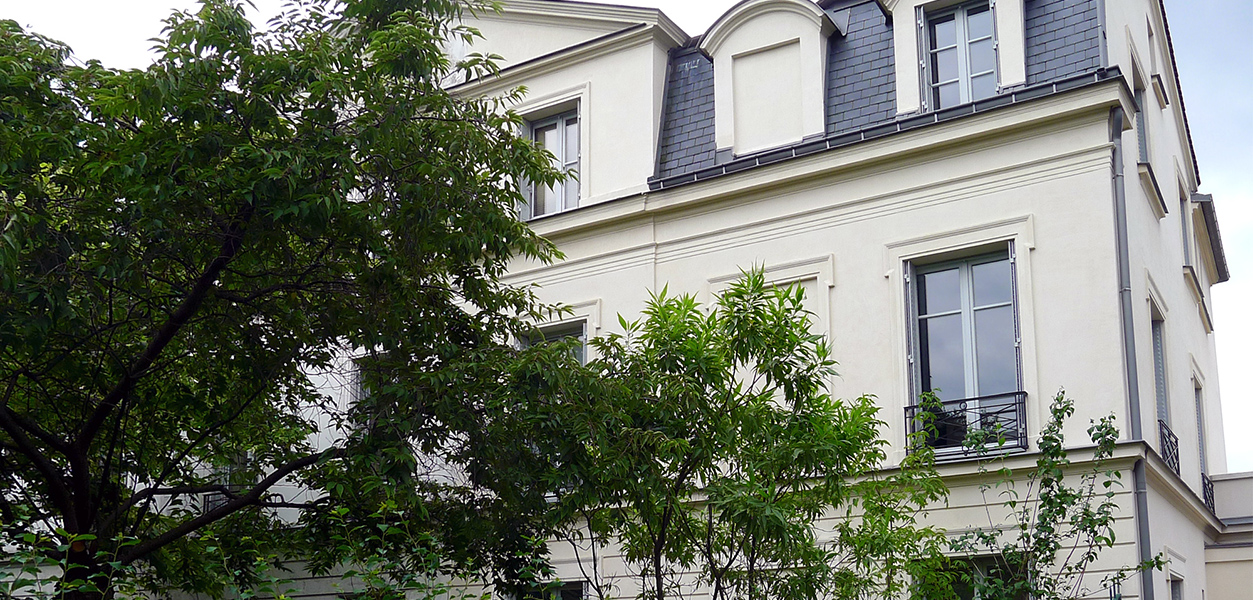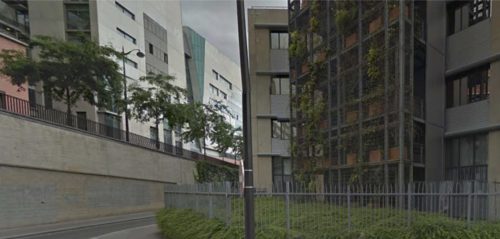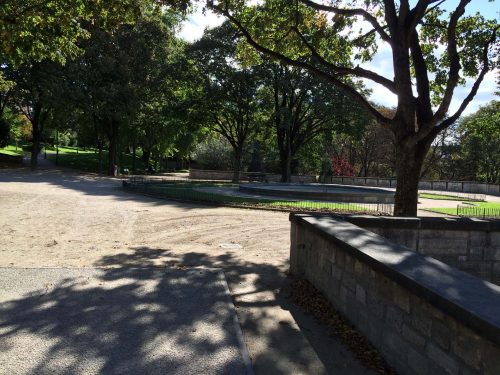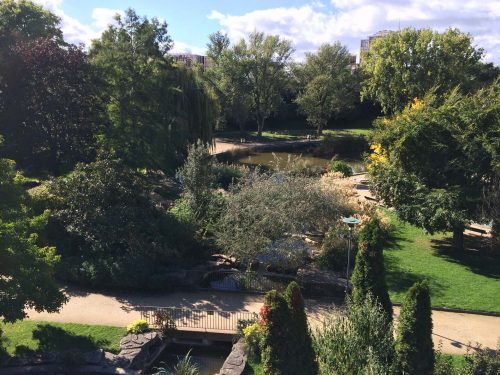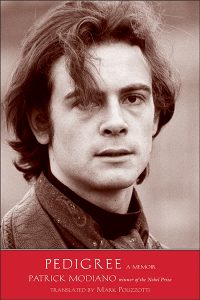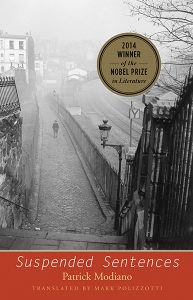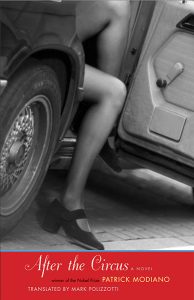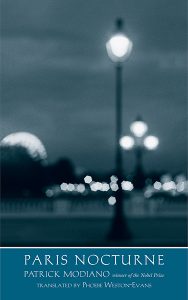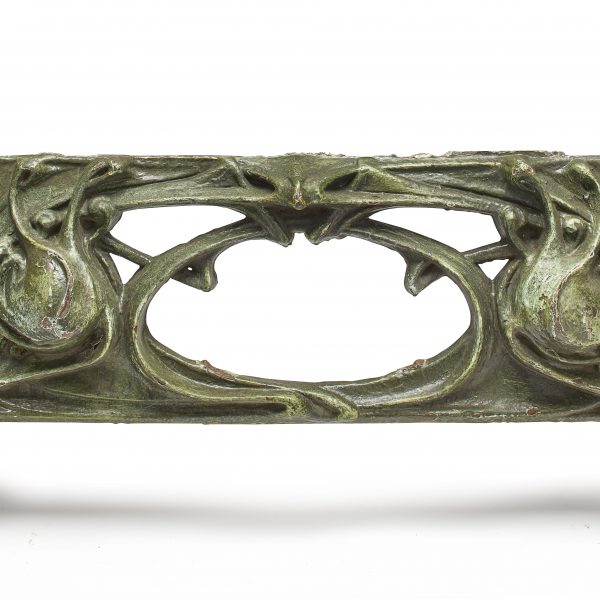Patrick Modiano’s Paris
Mark Polizzotti—
The Paris of Patrick Modiano’s fictions is a city that no longer exists, and perhaps never did. There is a character and a topology typical of his version of the city, a peculiar atmosphere (even when the sun is blazing, the streets seem shrouded in gray), an architecture, and a recognizable population of fringe-dwellers and schemers still operating in Occupation mode long after the fact. By and large it is the Paris of the mid 1960s, a city more human in scale, more manageable than today’s metropolis, yet also more dangerous—the Paris in which Modiano reached maturity and lived the episodes that have informed his novels ever since; in which, as he says in Suspended Sentences, “one could still believe that adventure lay right around every street corner.” And it is a Paris we would be hard-pressed to find outside the pages of his books.
It’s not just that streets and buildings have changed in the past fifty years. Many have, of course, as the author is quick to acknowledge. But as with rendering a facial likeness, which depends as much on capturing the relations between the features as the features themselves, the Paris of these novels seems built on an accretion of isolated spots with poetic names—Passerelle de la Mare, Hameau du Danube, Château des Brouillards—or on locations so specific that the composite portrait they end up sketching bears as much resemblance to the author as it does to the French capital.
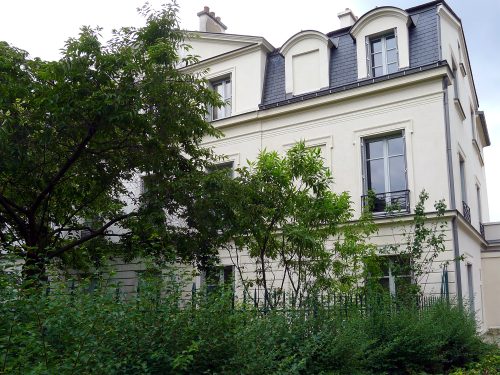
Château des Brouillards. Allée des Brouillards – Paris XVIII by Mbzt via Wikimedia Commons under a Creative Commons license
Here’s the paradox: On the one hand, this specificity of place gives Modiano’s stories a veracity and sense of lived experience that overspill their narrative arc. The novel After the Circus is filled with such details, placed there, one suspects, less to ground the plotline than to say to the reader, “This really happened.” On the other, one gets a sense of disorientation when reading Modiano, resulting at least in part from a tension between this almost hyperreal precision and the knowledge that, despite this, the places themselves keep eluding our grasp.
Sometimes, it’s simply because the sites evoked from the narrator’s youth have been cleared away to make room for a cityscape that, increasingly, he no longer recognizes. (He’s not alone: today’s Paris flâneur would have a tough time squaring, for instance, the “dead-end street that almost no one knew,” as Raymond Queneau describes Rue de la Croix Jarry to the young Modiano in the memoir Pedigree, with the contemporary thoroughfare of the same name that skirts such modern high-rises as the Watt-Biopark and a new branch of the University of Paris.) But even when the spot has remained more or less untouched, one still might not find it.
I had become intrigued, while translating Suspended Sentences, by some of the bewitchingly named hideaways the book revealed to me, and on a recent trip to Paris, I set out to discover one of them: the Poterne des Peupliers, located in the lower reaches of the 13th arrondissement. From Modiano’s mention of it, I anticipated a romantic hidden corner, one of those little-known enclaves still enfolding wisps of prewar mist. I ended up in a park—a pretty park, to be sure, with, as its name suggests, many poplars and weeping willows (along with a distinctly un-pretty sports complex), but a park, no more, no less.
At first I was disappointed—what hold could this park have on Modiano, and how could his prose infuse such magic into a place that turned out to be so mundane?—but then the obvious truth hit me: As with any writer describing a specific locale, the areas of Paris that Modiano calls forth have been filtered through the lens of his personal vision. The magic comes not from without but from within.
Modiano is a tireless walker of Paris, a man to whom no corner of the city seems unfamiliar. It’s one of the things I, another inveterate footslogger, enjoy most about his writings: that shared love of wandering, of being an urban pedestrian, Fargue’s piéton de Paris; the knowledge that the places in a city are best learned, best absorbed, through the feet. His gift is to make these places into more than they are, transform them verbally into spaces detailed enough to entice our imaginations, empty enough to let our own sensibility fill and furnish them. These landscapes truly come alive only when we let their author lead us through them, when we see them through his eyes, his itinerary and personal history. Ultimately, Modiano’s Paris exists on a map found not in any Michelin guide or Google search, but in the more exclusive vade mecum of his particular nostalgia and longing.
Patrick Modiano, winner of the 2014 Nobel Prize for literature and an internationally beloved novelist, has been honored with an array of prizes, including the 2010 Prix mondial Cino Del Duca by the Institut de France for lifetime achievement and the 2012 Austrian State Prize for European Literature. He lives in Paris. Mark Polizzotti has translated more than forty books from the French and is director of the publications program at The Metropolitan Museum of Art, New York.
Further Reading:























